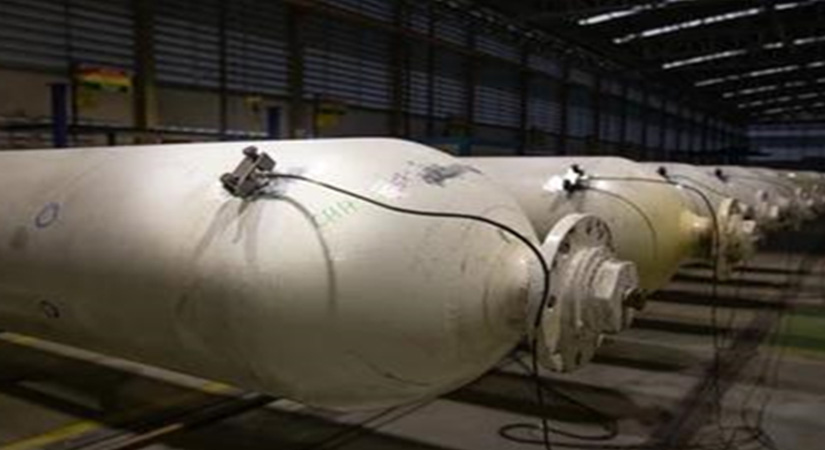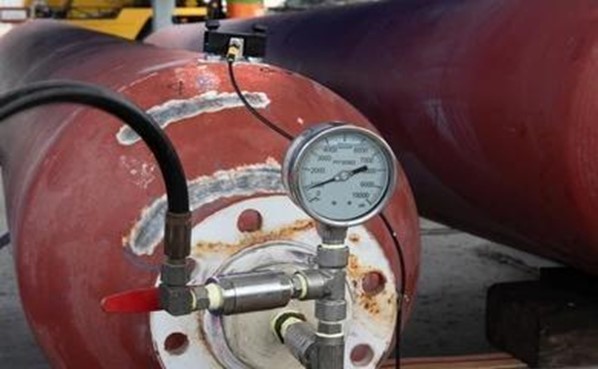Acoustic Emission Testing: Everything You Need To Know
You must have noticed that when substances are breaking down, deforming or otherwise getting destroyed, they generate an unusual kind of sound and sometimes, these sounds are really boisterous and evident. While sometimes, they are much more modest and subtle, and it's not that easy to detect them, you would require specialized equipment to detect the sound. Observing these subtler sounds using AET, i.e. acoustic emission testing method, can uncover cracks and many other deformities that have been formed, which might result in critical issues, like equipment failure, in the future if not rectified.

What Is Meant By Acoustic Emissions?
Acoustic emission (AE) is defined as the generation of transient elastic waves because of the quick energy released from localized sources in a substance. These acoustic waves are radiated by solid substances when they encounter deformation or destruction. AE is connected with an enduring alteration of the microstructure of a substance. In simple terms, acoustic emission is the sound produced when a substance gets damaged, although different types of waves, plus sound waves, might also be included.
There are numerous events that can produce AE; they are :
- Thermal stresses
- Phase Transformation
- Cracking during cooldown
- The dislocation movement caused by plastic deformation.
- Tension build-up.
- Matrix cracking.
- The development and extension of cracks in a subject under pressure.
- Depending.
- Fibre breakage.
- Twinning a form of crystalline distortion.
Acoustic emissions can emerge in several types of substances that include wood, concrete, plastics, polymers, and metals. The traits of an acoustic emission totally depend on different factors, involving the event that resulted in the acoustic emissions and the material entailed. For example, matrix cracking tends to generate a soft, low amplitude emission, while crack propagation generates a higher amplitude emission.

What is Acoustic Emission Testing?
The term acoustic emission testing (AET) refers to the procedure of inspecting and recording acoustic emissions utilizing specialized tools. This is a type of non-destructive test (NDT) that has many uses, encompassing assuring the structural integrity of vessels, monitoring the quality of the weld and much more. The method includes the utilization of sensors to identify AE and accordingly transform the waves into electrical signals in order to record them. After that, the results can be analyzed to evaluate the condition of the material and find any flaws. The recorded data can give valuable information about the lineage and importance of a defect present in the material.
You can also read: Everything you need to know about Magnetic Particle Testing.
Advantage Of Acoustic Emission Testing Method
Acoustic emission testing can be utilized for the timely identification of any defects & real-time monitoring as well. It is a high-sensitivity test technique and delivers various advantages, as mentioned below:
- Timely damage detection - As acoustic emission testing inspects the formation of cracks & defects, and as mentioned above that it is a highly sensitive test method, it can detect fairly small/micro defects in the initial stage. This early detection encourages you to fix up the flaws before they cause any crucial problems or threats.
- Global, simultaneous examination - With the help of AET, you can analyze the whole unit or system simultaneously, comprising pressure vessels, piping, reactors and any other extra elements. This actually leads to a more productive, cost-effective testing procedure and facilitates the assessment of even large systems somewhat instantly.
- No need for stopping the operation - AET can often be executed on a unit while it is functioning, averting the necessity for shutting down a system. One can even conduct acoustic emission testing at the time of an in-service over-pressurization or scheduled cool-down. Preventing a shutdown of the machines can decrease costs considerably and will help you keep a consistent productivity level.
- Detection of only active flaws - Acoustic emission testing only specifies active deformities means those defects that are thriving. This characteristic shows that only flaws that are liable to cause critical problems in the future are detected, whereas stable cracks and former fabrication flaws are not. This facilitates you to concentrate on the most important problems, conserving the time and money of your business.
- Immediate indication of threat - When it comes to acoustic emission testing, you get a sudden indication of the stability & strength of a provided component and the risk of disappointment or failure, encouraging you to react promptly if required.
- Minimal disruption to insulation - Usually, only minor holes in insulation are needed to mount sensors. You might also be eligible to park permanent sensors under the insulation.
- Compliance assistance: Various standards recognize acoustic emission testing, and it can help you to ensure compliance with federal, state and local regulations.
- Decreased expenses - Utilizing acoustic emission testing can decrease costs significantly by preventing downtime, curtailing examination time, expecting the smallest disruption to insulation and specifying only the deformities that may result in substantial problems in the near future if not amended.
Limitations Of Acoustic Emission Testing Method
Like any other test method, acoustic emission testing also has some limitations, which indicates it might not be the perfect option for every application. In some circumstances, organizations can profit from supplementing acoustic emission testing with other examination methods. Some of the disadvantages/limitations of acoustic emission testing are as follows :
- Can only provide qualitative results - Acoustic emission testing can only deliver qualitative outcomes and not quantitative results. It can actually detect that a flaw still exists, but specifying the size and depth of a crack, for instance, requires other examination methods, just like ultrasonic testing.
- Can only find active flaws - The fact that acoustic emission testing only detects active flaws can actually be an advantage, but in some situations, you might also wish to identify stagnant imperfections. Acoustic emission testing would not help this objective. It is furthermore possible that AET may not observe very small active defects if the loading is not sufficient to result in an acoustic circumstance.
- Loud environments present challenges - It can be extra challenging to obtain precise findings from acoustic emission testing when it is conducted in loud service atmosphere settings. In order to filter out surplus noise, signal discrimination and noise reduction methods and technologies are employed.
- Requires certain skills, knowledge and proficiency - Conducting acoustic emission testing needs a highly-skilled, experienced, and knowledgeable operator. It also includes the utilization of relatively complicated and costly software and hardware.
Check this out: Acoustic Resonance Technology External Measurement Inspection System.
Principle Of Acoustic Emission Testing
When a material with defects is subjected to mechanical stress or load, it releases energy. This energy travels in the shape of high-frequency stress waves. These waves or fluctuations are obtained with the utilization of sensors which in turn transforms the energy into voltage. This voltage is electronically overstated with the utilization of timing circuits and later refined as acoustic emission signal data.

Applications of Acoustic Emission Testing
It's a known fact that acoustic emission testing is versatile and has numerous applications in various industries. It is also used as research equipment. Now, let's read about a few applications of acoustic emission testing that are listed below:
- Identification of active sources that includes crack propagation, fatigue, fibre delamination, yielding, fibre fracture, corrosion and creep.
- Leak detection. Laboratory and research and development (R&D) studies.
- Weld quality monitoring.
- In-field examination.
- Structural integrity inspection.
- Production quality supervision.
- Monitoring chemical reactions and phase changes.
- Leak detection.
A broad category of industries can use acoustic emission testing, which includes :
Aerospace: The aerospace field can employ acoustic emission testing to evaluate fuel storage tanks, motors, and ageing aircraft.
Alternative energy sources: Acoustic emission testing is beneficial for assessing the structural integrity of alternative energy infrastructure, just like wind turbines.
Automotive: Automotive manufacturers can make use of acoustic emission testing to evaluate vehicle elements and factory equipment as well.
Materials research and development: Those who are working in materials research and development, can make use of the AET method to examine the integrity of brand new materials as well as existing materials in numerous applications.
Nuclear power: In order to inspect nuclear components like valves, lift beams and streamlines AET can be utilized.
Offshore drilling: This particular non-destructive method can give early detection of drawbacks in offshore drilling pipelines and platforms.
Oil and gas: AET can be used by oil and gas companies to assess processing equipment, vessels and pipelines.
Power distribution: Acoustic emission testing can be utilized in power transformers for partial discharge inspection.
Conclusion
Hopefully, this article about the acoustic emission testing method has been helpful to you in gaining in-depth knowledge. Learn more by visiting One Stop NDT. We constantly try to create understanding & awareness in the NDT Market about the new developments, methods and products & services available in the global market.









